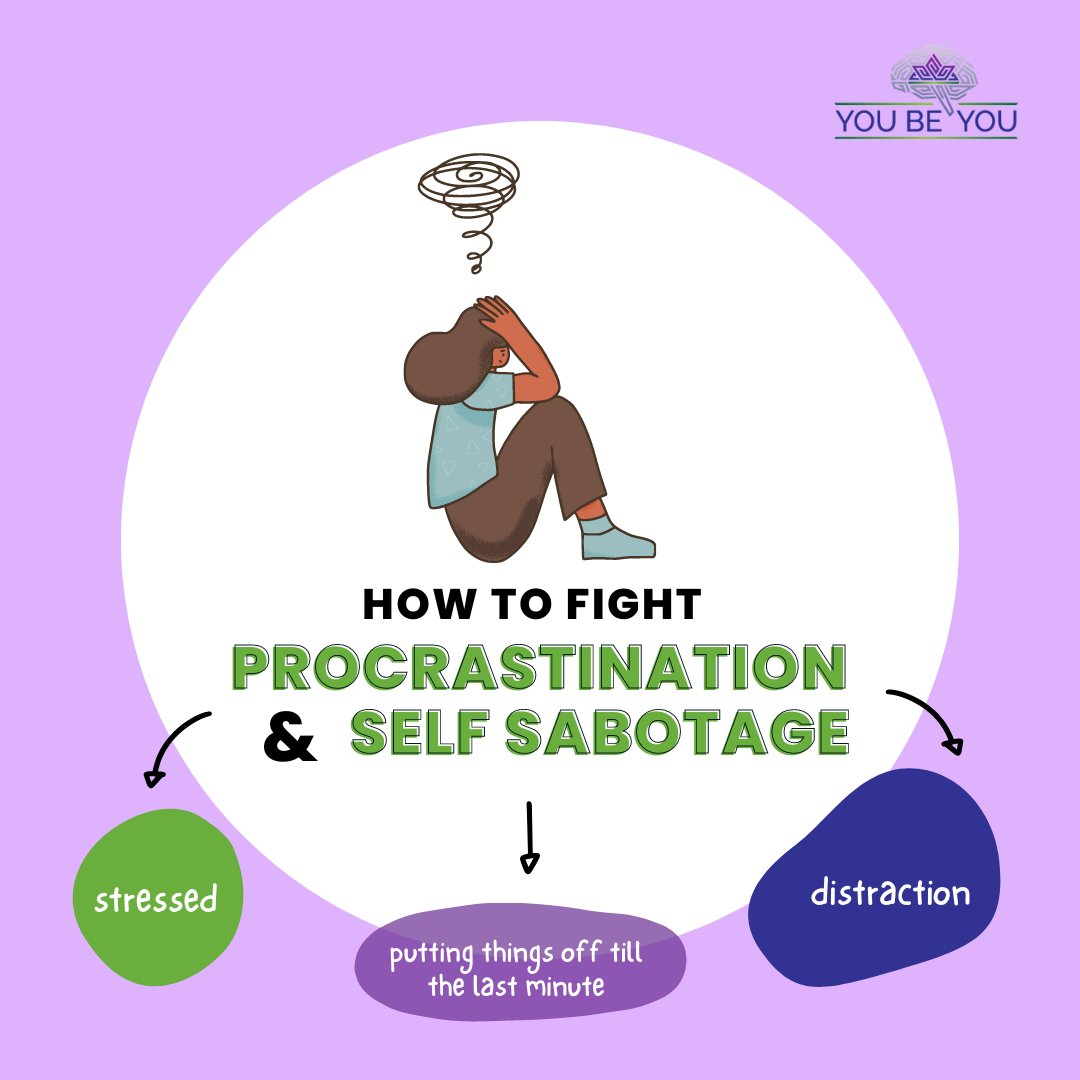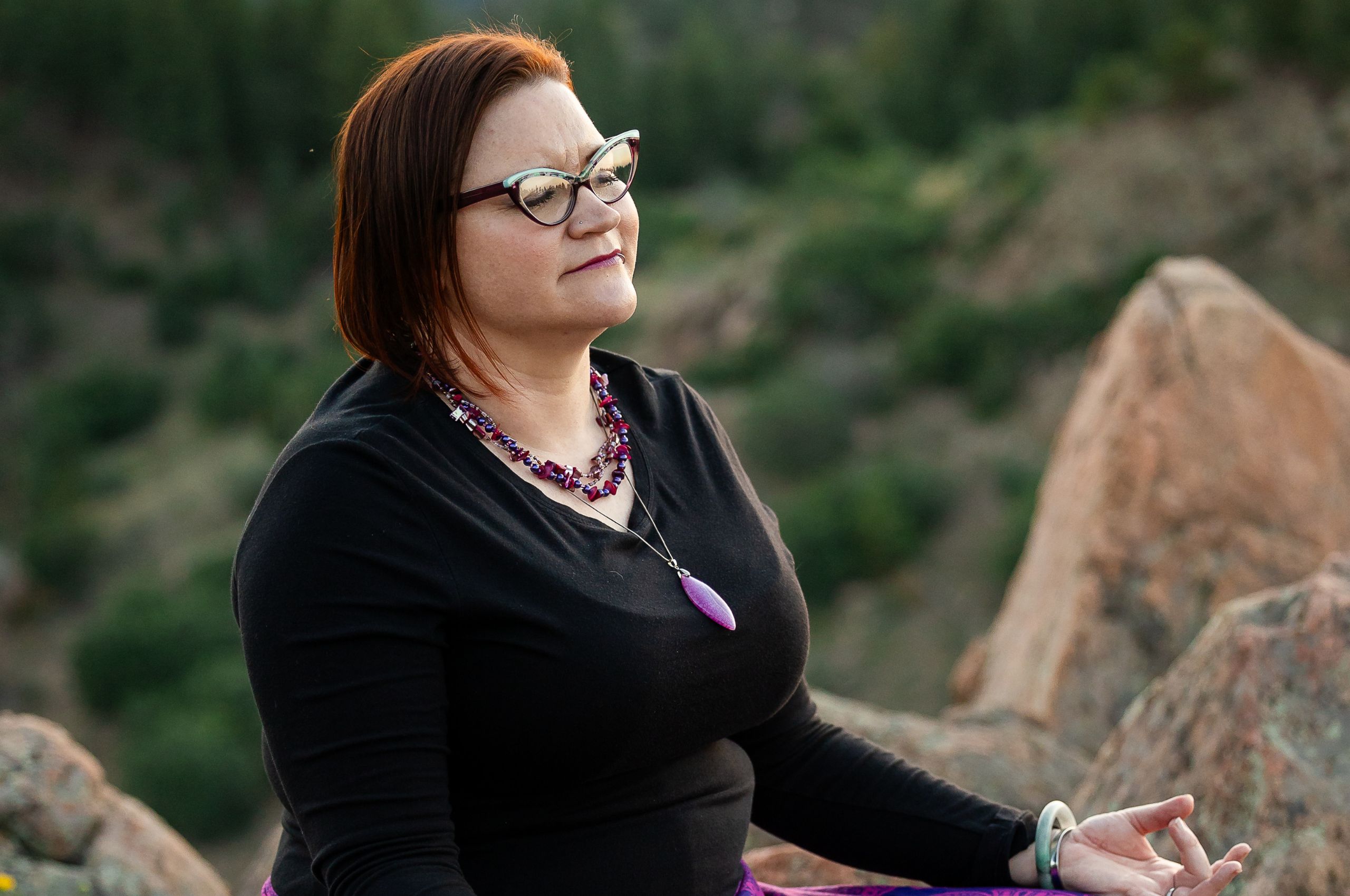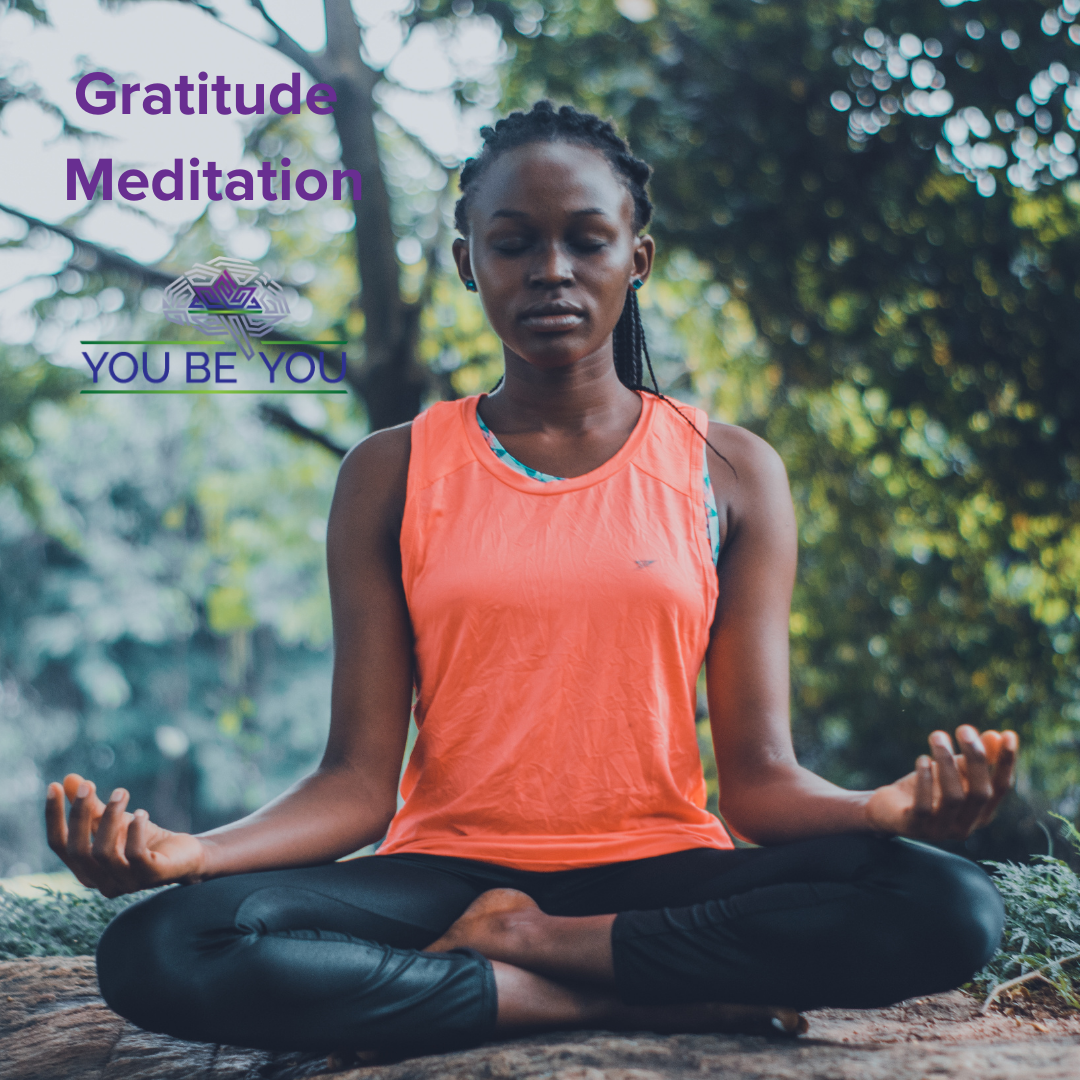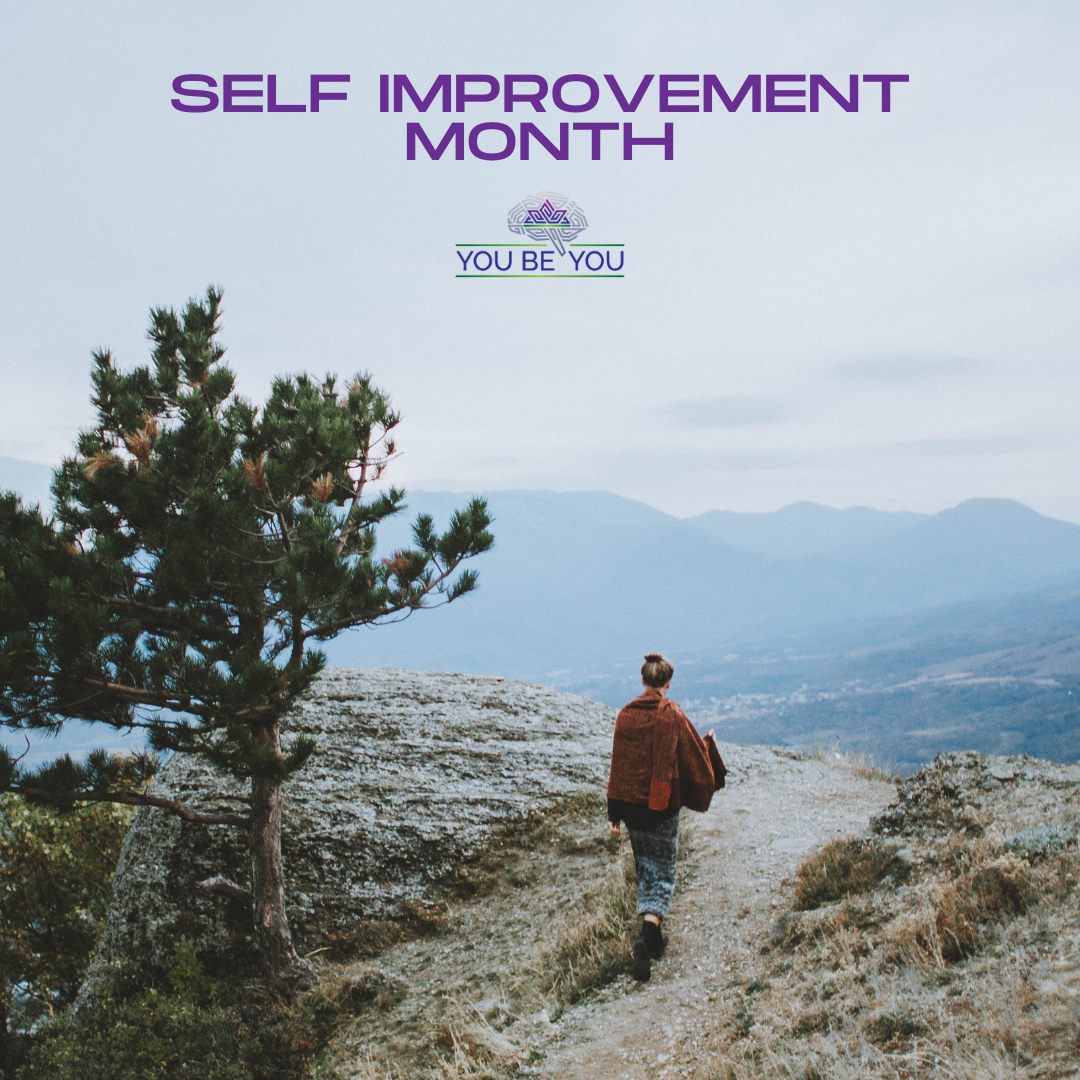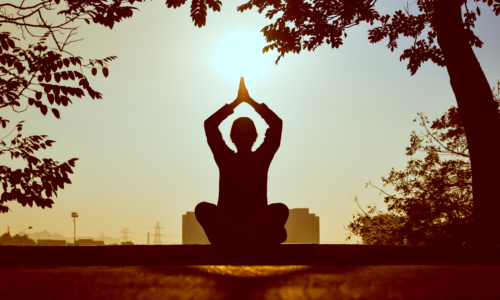Procrastination & Other Ways We Self Sabotage
Procrastination is a form of creative avoidance, which is one way we avoid working towards our goals. This desire to put off what we are working on is caused by our sabotaging identities, a subconscious part of us. These sabotaging identities are designed to keep you the same as you’ve always been because even if you don’t enjoy feeling those emotions associated with the way you’ve always been, these emotions are familiar and it identifies everything that’s familiar as safe.
Where do sabotaging identities come from?
At one point in your life (under the age of 7), these identities were actually helpful for you. For example, my primary sabotaging identity makes me think I’m not good enough. When I was 3-4 years old, this was beneficial because it kept me striving to be better and pushing myself to learn more and more. This identity is the reason why I could read at a 3rd grade level on my first day of kindergarten – it gave me a high level of motivation to be a better person. Over time I have grown more and more but that identity has stayed the same. Fast forward 32 years and this identity which used to be beneficial is now holding me back because when I am working on things, it has become the voice of my inner critic telling me that I’m not good enough or I’m not smart enough.
This is the same for all six of the sabotaging identities – what used to help us is now holding us back. When you know what your particular sabotaging identity is, you can start to work with it so that it’s no longer running you! Besides identifying which sabotaging identity is holding you back, it’s important to recognize the ways you’re holding yourself back. When you recognize these patterns, you can use them as a cue to understand when your sabotaging identity has taken over!
In addition to procrastination, other common ways we self sabotage include:
- Chronic worrying: People tend to get stuck in a cycle of chronic worrying because it gives a sense of control over a situation. When something is out of your control, worrying can give us the illusion that we can do something about a certain situation. This in the end causes more harm than good however, causing more stress and anxiety than is needed.
- People pleasing: Sometimes we make decisions based on how it will make others feel. This can be self sabotaging as when we are in this mindset we aren’t making decisions or doing things based on what we want and we are holding ourselves back based on how we think this will make others react to us.
- Confusion: This is the sneakiest way we sabotage ourselves! By going into confusion and telling ourselves “I don’t know how to …” we are preventing ourselves from having to make a tough decision. Sure there are times that we don’t actually know, but it’s often that we use this as an excuse so we don’t have to move forward on our goals.
How can we reduce our self sabotage?
- Join my Empowered Living Membership! I will teach you all about the six sabotaging identities, how to spot them when they’re holding you back and what you can do to reduce the amount of self sabotage you’re experiencing. Plus so much more! Join now!
- Tap into your “big why:” Think about the deeper meaning for why you want something and return to that often. Your why is very important because it’s the motivation for everything that you do in life! When you recognize yourself in a self sabotage pattern take a step back and read your why statement to get tapped back into your power and take action.
- Connect with your higher self: Your higher self already has all of the answers. We can tune into our higher self by getting quiet and going within. Tap into that through meditation, walking in nature, journaling, or practicing gratitude. Any way that you get connected with your inner knowing is a great way to receive the necessary information from your higher self!
- Balance Your Masculine and Feminine Sides: Everyone has a dominant masculine or feminine nature. Masculine nature is active, external and often action taking. The feminine nature is more passive, thoughtful, creative and feeds internal energy. It’s important that we balance both of these energies so that one does not overpower the other. It’s very common in our culture to get stuck in masculine action taking mode and we get the best results when both of these sides are balanced. So ask yourself what feminine actions are you taking and how can you use them to support you in reducing your self sabotage!
How Meditation Changed My Life & Tips To Make Your Meditation Habit Stick
Meditation is a powerful tool that can totally change your life! I know because I am living proof of this – I wouldn’t be a coach today if it wasn’t for meditation! Read on to learn more story and tips on how to make your own meditation habit stick!
My Story:
I had heard from dozens of people “you need to meditate!” I was high strung, very stressed out and having regular anxiety/panic attacks. I decided that I didn’t want to live my life medicated any longer, so I went off my anti-anxiety meds and started looking for natural alternatives. After trying out many things, I found 2 things that worked and made a BIG difference: probiotics (read more here) and meditation!
The probiotics helped get my gut bacteria balanced out (there’s a lot of research showing link between microbiome imbalances and anxiety). The meditation helped me quiet my mind and unlocked many different doors that got me where I am today! At the time I started meditation, I was honestly afraid to be alone with my own thoughts. I was constantly overwhelmed and on the verge of falling apart. I had just experienced some significant health challenges due to a long term leg injury and gained 50+ pounds as the result of my inactivity. I was depressed, anxious, and desperate to find a way out.
I had just met my husband, an avid meditator for years at that point, and he saw that it was obvious I could use support in quieting my mind. He encouraged me to meditate and I told him I had already tried and it didn’t work. Although I had tried, I had the incorrect expectations and understanding around meditation, which made it a painful process. I would sit quietly and attempt to stop all my thoughts, and if you’ve ever meditated, you know that’s when your thoughts come loud and fast like a fire hose. I would sit there, struggling to stop my thoughts, getting frustrated at myself and feeling like I was wasting my time. This lead to more anxiety and I always came out of the meditation more stressed out then when I sat down. After more than a dozen attempts, I decided that meditation just wasn’t for me and wrote it off entirely.
The Turning Point:
My husband heard my struggles and supported me in understand that meditation isn’t simply about stopping your thoughts. It’s about being present in the moment and letting your thoughts float by without being attached to them. He taught me about mindfulness meditation which is about focusing on your breath as an anchor and place to put your attention so you don’t get wrapped up in your thoughts. Knowing that I still was having trouble with that, he started me off in a much better place – active meditation. Active meditation is simply doing a task that requires to conscious effort so you can get into a zen-like meditative state.
I started off with meditative coloring, crafting, nature walks and I loved it. When I was physically doing something, I found it easy to get to a calm place in my mind and let go of my thoughts. I practiced active meditation as much as I could and really enjoyed it… my mind had been changed about how great meditation can be! Then I graduated to short guided meditations (5-10 minutes). I would sit and listen to soothing voices as people narrated my meditation experience. It was so easy to get into a meditative state and I felt amazing at the end! They were so enjoyable that I found myself listening to longer and longer meditations and eventually working my way up for 30+ minutes! I started to notice immediately that I was a lot less stressed, less reactive to things that used to trigger me and was genuinely enjoying life more!
Finally I had found my groove in meditation! After months of this, I finally moved onto quiet self guided meditations. These are more advanced techniques, so if you can do this, give yourself a pat on the back! I would spend 10-15 minutes each day of quiet meditation. At the time many things in my life had improved, however I still found myself searching for answers. My job wasn’t bringing me any joy but I had no idea what my next step would be. My health challenges and extra weight left me feeling disempowered and doctors had literally told me I was “broken,” so I was sad about that. All of my answers came through my quiet meditations!
During my meditation, I would hear these divine whispers pointing me in the correct direction. I was really sick of feeling “broken” and one day a giant lightbulb clicked: I wrote million dollar grants for the National Institute of Health and did research for a living… why had I not looked at the research to address my personal health struggles?! I threw myself into deep research and went deeper and deeper down the rabbit hole, loving every second I was researching about health. Long story short is that through research I solved all my health problems, completely changed my life and inspired me to become a health coach to help others. Meditation had turned me onto my new life path that I had been longing for!
Why you should meditate too:
There is TONS of research out there sharing the amazing benefits of meditation. It helped me completely change my life path and the more I looked inward for guidance, the more clear it became where I was going in my life.
So many people I have talked with say that they don’t have time for meditation. I think you don’t have time to NOT meditate! Taking a few minutes per day to meditation has shown to increase your productivity and mental clarity throughout the day, which helps you be significantly more effective. Turning inward for guidance helps you focus on what’s important instead of wasting your time on things that don’t matter to you (like what I was doing in my dead end job and the bad habits I was doing to escape my terrible job). Meditation gave me hours back everyday and made me a much better, happier person!
I’ve made a compelling argument of why it’s beneficial to add meditation to your self care routine. However, sometimes it can be hard to start a new habit. The next trick is making the habit stick!
Here are some tips for how to get your meditation habit to stick:
-
- Start with active & guided meditations!
- Active meditation is easy! It is doing things that get you into a relaxed meditative state. Coloring, nature walks, doing the dishes, crafting, anything where you zone out and lose yourself in an activity that doesn’t require your mind.
- There are thousands of guided meditations available for free that you can use! Check out youtube or one of the many meditation apps for more guided meditations.
- Start small = 2-5 minutes is enough to start!
- Many people think that you need to meditate for 15-30 minutes per day. While that’s a great place to be, it’s often not accessible for someone starting out a meditation habit. As little as 2-5 minutes done every single day make a big difference in your life!
- Be consistent = meditate daily!
- Just like any other habit, consistency matters much more than duration when you want to establish a new habit.
- Establish a daily routine!
- Creating time in your calendar for a daily meditation routine is a huge key to success! Remember that doing things in the morning is the best way to ensure that they’re getting completed each day.
- Identify yourself as a meditator!
- Identifying yourself as a meditator is a great way to trick your brain into making it easier to establish a regular habit!
- Start with active & guided meditations!
By following these tips you’ll be able to easily form a meditation practice that benefits you without feeling like you don’t have the time!
Gratitude Guided Meditation
Gratitude is one of the most powerful things you can do to create a happy, balanced, peaceful life! This means it’s a great way to start the new year off on the right foot! Check out my amazing gratitude meditation focused on giving gratitude to your body!
September is Self-Improvement Month!
Self-improvement is so important! The most successful people and leaders in the world work on themselves and are always focused on self-improvement. Working on self-improvement helps enhance strengths, improves mental health, and can heal relationships.
Here are a few tips for self-improvement:
- Go for a walk or exercise. Getting some exercise during your day will improve your mental health, and can really improve how you overall show up for yourself and others.
- Meditate. Slowing down with meditation is a great way to improve self-awareness and self-esteem. Lower your stress, anxiety and foster kindness through meditation.
- Read more books. Reading will help keep your brain sharp and improve overall brain health.
- Adjust your diet. Incorporate more fruits and veggies and eliminate processed foods as much as possible. Making small tweaks towards a healthy diet creates big results in your physical and mental/emotional health!
- Schedule a private coaching session with Kitty. If you’re feeling like you need an extra boost, schedule a private coaching session with Kitty can really help you get on the right track!
Walking Meditation
Quick How to Guide for Walking Meditation
Most people think that meditation means sitting quietly, but meditation can also be an active process! My favorite type of meditation is WALKING MEDITATION! Walking meditations help you slow down and really enjoy the beauty that constantly surrounds us! This is especially great because it helps you squeeze mindfulness and movement into your busy schedule at one time!
The process is quick, simple and easy, try out this 10 minute walking meditation:
1. Ground yourself – Walk slowly and connect to feelings of your legs and your feet on the ground. Feel the sensation of your heel as it touches the ground, the base and arch of your foot, and finally the toes. Notice what it feels like to lift your foot and the muscles in your legs. Focusing on these sensations grounds you and helps you be present in your body at this moment.
2. Gratitude – Remember that walking is a luxury that not everyone has. Take a moment to show appreciation for your legs and feet and feel gratitude for the ability to walk. Thank your legs for the daily service to get you to where you want to go!
3. As you walk, pay attention to your senses, one at a time:
(1) the feeling of your body walking, the feeling of your breath going in and out of your lungs, the feeling of wind and temperature on your skin
(3) any smells in the air or plants around you
(4) the taste of the air or anything in your mouth
(5) what you can hear
(6) what you can see
4. Focus on all of your senses at once and pause to thank your amazing body. Remember to smile and be grateful for the time you took for yourself today!
3 Minute Guided Meditation
Take yourself on a 3 minute relaxing journey.
New Year, New You Mini Challenge Day 3: Meditation and Gratitude
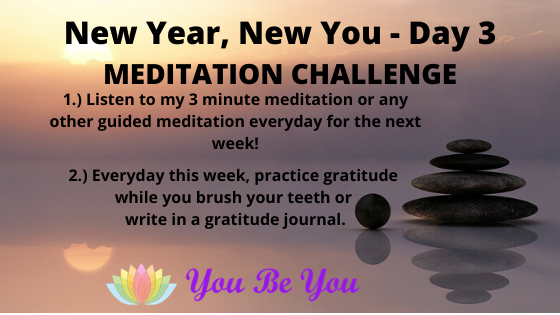
Click here for a 3 minute guided meditation from You be You!
Is recommitting to health one of your goals for 2020? Then join this FREE 5 day mini challenge!
You’ll get healthy tips that are easy to implement and it’ll kickstart your health journey for 2020!! Each day we’ll cover a topic to give you tips, tricks, and teach you why it’s so important!
Topics include:
– Meal planning made easy and why breakfast is so important
– Creative ways to squeeze exercise into your busy day
– Why drinking water is so important and how to hit your daily hydration goal
– Importance of sleep and how to improve your sleep habits – Benefits of meditation and how to integrate mindfulness in your everyday life
Click here to learn more about my 6 Week to Success program!
Dark Chocolate Meditation
Both dark chocolate and meditation improve your heart health and mental health! So why not combine them and get double the benefits!?!?!
Grab a piece of dark chocolate and give this chocolate meditation a try!!
Mindfulness Meditation for Beginners
While you read this, take a couple minutes to center yourself by focusing on your breath. Follow these steps below now, and every time you want to meditate.
1) Put your phone on silent or airplane mode.
2) Set a meditation timer with a nice alarm tone. That way you’re not tempted to look at a clock and you won’t need to worry about spending too much time meditating. You want to come out of meditation slowly, so don’t be in a hurry to open your eyes. Take a few moments to remain present in the stillness you’ve created. When you’re ready, gradually become aware of your body and surroundings.
3) Sit in a comfortable position. If you’re sitting on a cushion, feel your sit bones rooting you into the ground. If you’re sitting in a chair, place your feet firmly on the ground and feel your body weigh heavy in your chair.
4) Close your eyes, be still and sit up straight with your chin tucked in slightly. If you find that closing your eyes makes you sleepy, then softly stare at a spot on the floor. Maintain a small smile on your face as this helps you maintain a relaxed and peaceful experience.
5) Breathe deeply. Breath through your in and out through your nose deeply and slowly. Alternatively you can breathe in through your nose and out through your mouth, letting your breath flow effortlessly in and out of your body. Don’t force your breathing here – just breathe naturally and observe your breath without thinking about it.
- If you’re having trouble focusing on your breath, there are techniques to help:
- count the time it takes to inhale/exhale
- count the number of breaths you’re taking up to 10, then restart
- say the word “inhale” so slowly that it takes the entire inhale to finish saying the word and repeat for exhale.
6) Let go of your thoughts. Let go of things you have to do later today or pending projects that need your attention. Simply let thoughts come and go and be at one with your breath. Sometimes it’s tough to calm your mind down, but focus on your breathing and what your body feels like. You can imagine a relaxing picture in your mind like waves on the beach, or bring your attention to parts of your body. Don’t think or analyze, just focus on your breath or the image.
7) Continue to purposefully watch your breath, focusing your sense of awareness on its pathway as it enters your body and fills you with life. Imagine every cell in your entire body filling with air, from the top of your head down to your toes.
8) Then watch with your awareness as it works its way up and out of your mouth and its energy dissipates into the world.
9) Smile when you’re done and give yourself a high five! Be grateful that you had this time to yourself, that you stuck with your commitment to meditate, that you showed yourself that you’re trustworthy, where you took the time to get to know yourself and make friends with yourself. That’s an amazing two minutes of your life.

